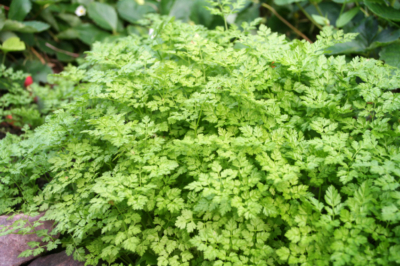Belonging to the same plant family and strongly resembling parsley, chervil is little known for growing in the garden or in a pot on the balcony. But it’s worth giving it a try – as it’s extremely uncomplicated!

Advance or direct seeding?
Chervil must be replanted every year because it is an annual. Thus, for reasons of cost and organization, it is recommended to sow instead of buying a new plant every year. Since chervil has a sensitive root system, it should ideally be sown directly on the spot. It reacts allergically to transplanting, which is the later consequence of growing it at home….
A loner that drives away slugs.
The chervil prefers to grow in a place that is available to it alone. It is extremely reluctant to share its territory. However, it does well next to lettuce plants. It gets along with them and protects them from slugs. Slugs do not like him and stay at a distance.
What location will meet the requirements of chervil?
Whether directly into the bed or in a pot on the balcony or windowsill – chervil can be planted in many places due to its small size. It prefers a partial shade location . It can also thrive in full sun.
However, full sun should be considered only under the condition when the soil can be kept evenly moist. Furthermore, the soil should have the following characteristics:
- loose
- permeable
- humus
- nutrient-rich
- Cultivation – from the beginning to the end?
Period for sowing : between March and September
- light germination: press seeds and do not cover with soil
- Keep seeds moist (germination period 15 to 20 days)
- Water young plants regularly (no waterlogging!)
- after 4 weeks first harvest possible – cut off chervil
- like to fertilize sporadically with compost
Tips & Tricks
Due to heat and dry periods it can quickly happen that chervil starts flowering a few weeks after planting. Then it means: quickly cut off the flower umbels – at least for those who want to continue to enjoy the herb and are not looking for seeds.









